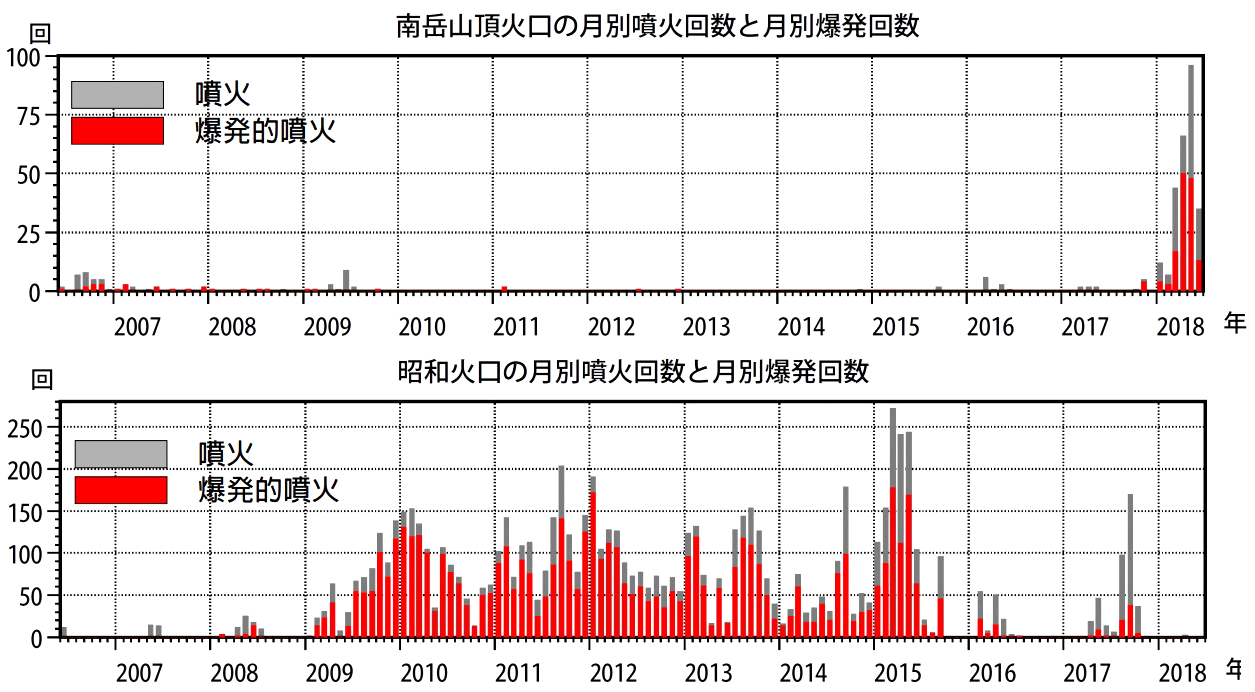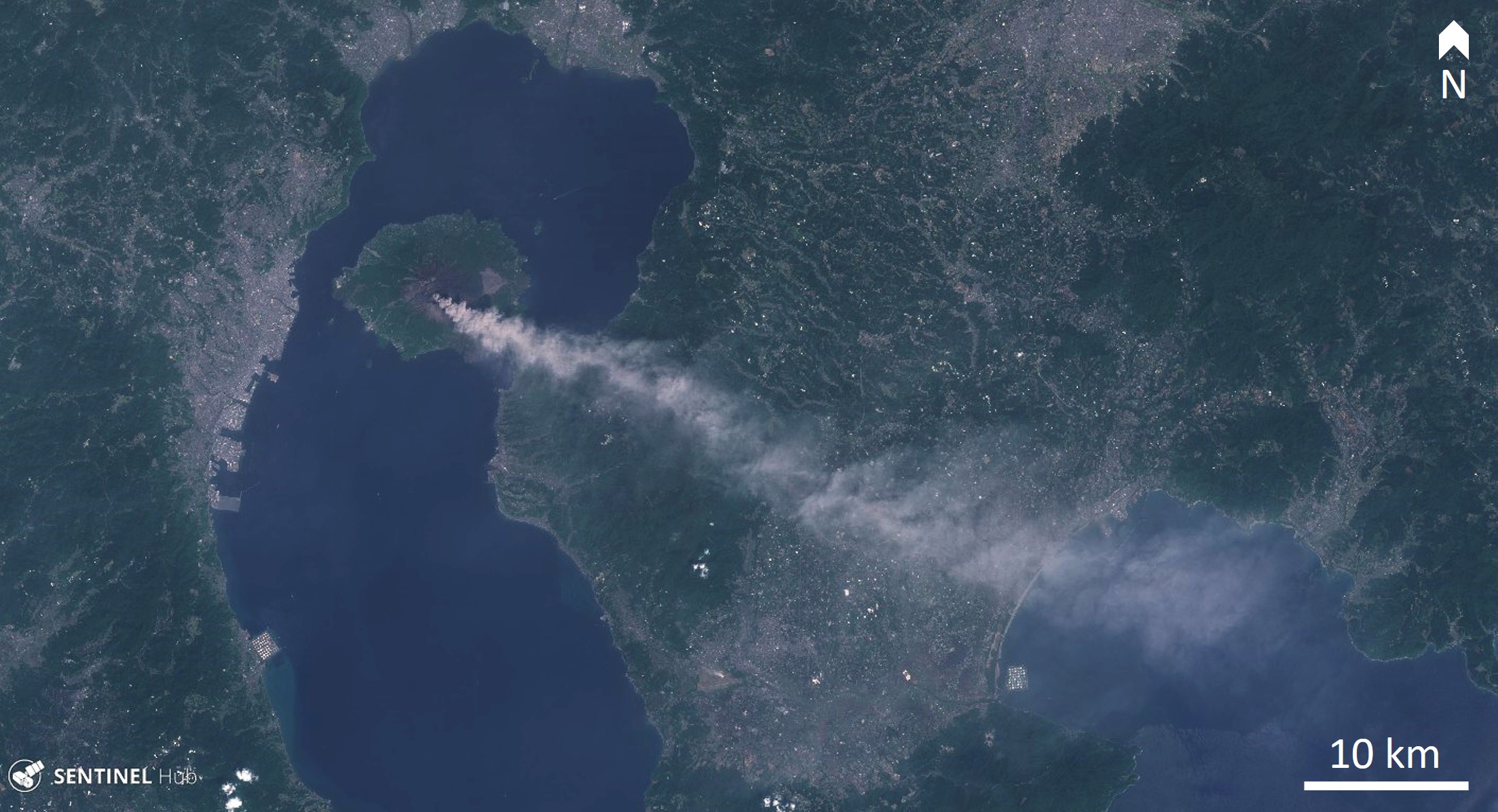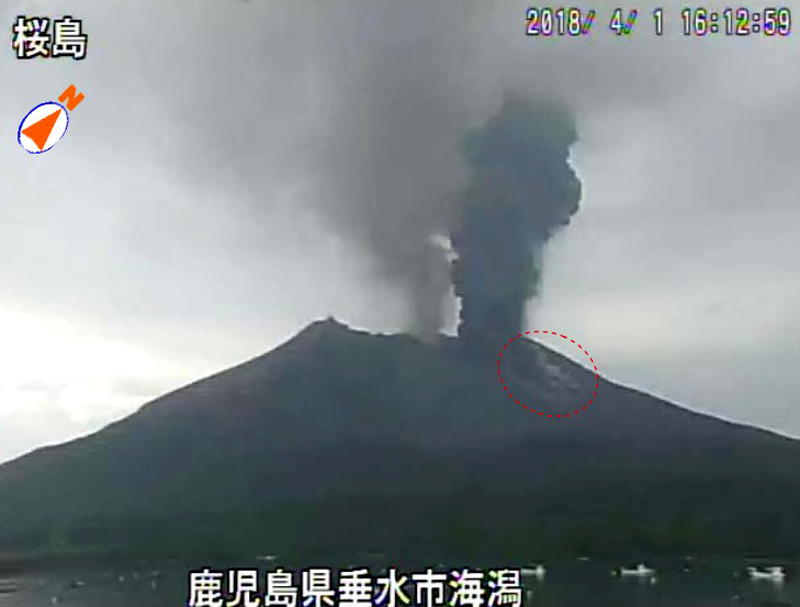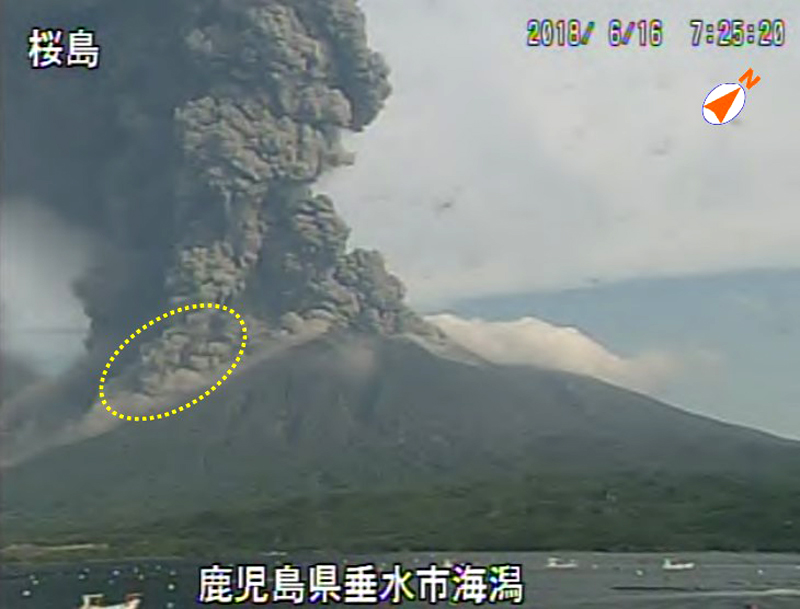Report on Aira (Japan) — August 2018
Bulletin of the Global Volcanism Network, vol. 43, no. 8 (August 2018)
Managing Editor: Edward Venzke.
Edited by Janine B. Krippner.
Aira (Japan) Activity increased at Minamidake and decreased at Showa crater in early 2018
Please cite this report as:
Global Volcanism Program, 2018. Report on Aira (Japan) (Krippner, J.B., and Venzke, E., eds.). Bulletin of the Global Volcanism Network, 43:8. Smithsonian Institution. https://doi.org/10.5479/si.GVP.BGVN201808-282080
Aira
Japan
31.5772°N, 130.6589°E; summit elev. 1117 m
All times are local (unless otherwise noted)
Sakurajima is a persistently active volcano within the Aira caldera in Kyushu, Japan. The two currently active summit craters are Showa and Minamidake, both of which produce intermittent ash plumes and occasional pyroclastic flows. This report summarizes the activity from January through June 2018 as described in reports issued by the Japan Meteorological Agency (JMA) and Tokyo Volcanic Ash Advisory Center (VAAC).
The volcano remains on Alert Level 3 (out of five). A change in activity occurred in late 2017 to early 2018, with a reduction in activity at the Showa crater and a significant increase in activity at the Minamidake crater (table 19 and figure 63). During January through June 2018 a total of 260 explosions were recorded at Minamidake (135 of these were explosive), and four at Showa. Pyroclastic flows were produced on 1 April from Showa crater that travelled 800 m, and a flow reached 1,300 m from Minamidake crater on 16 June. Periodic incandescence was visible at the summit throughout the reporting period.
Table 19. Eruptive events and pyroclastic flows recorded at the active craters of Sakurajima volcano in Aira caldera. The number of events that were explosive in nature are in parentheses. Data courtesy of JMA (January to June 2018 monthly reports).
| Month | No. of ash emissions at Showa crater | No. of ash emissions at Minamidake crater | Pyroclastic flows |
| Jan 2018 | 1 | 12 (4) | -- |
| Feb 2018 | 0 | 7 (3) | -- |
| Mar 2018 | 0 | 44 (17) | -- |
| Apr 2018 | 3 | 66 (50) | 800 m E from Showa. |
| May 2018 | 0 | 96 (48) | -- |
| Jun 2018 | 0 | 35 (13) | 1,300 m SW from Minamidake. |
In January 2018, one ash emission occurred at Showa crater and twelve occurred at Minamidake, with four of these classified as explosive eruptions. The largest ash plume reached 2,500 m above the crater on the 18th and two explosions ejected material out to a maximum of 700-800 m from the craters. Through February, three of seven ash emissions at Minamidake were explosive. The largest ash plume occurred on the 19th and reached 1,500 m above the crater. On the 27th, the crater ejected material out to 700 m from the crater.
Through March, 44 ash emissions occurred with 17 of these classified as explosive events. The largest ash plume was produced on the 26th and reached 3,400 m above the crater. An explosive eruption on 10 March ejected material out to 1,300 m from the crater. During April, Minamidake produced 66 ash emission; 50 of these were explosive (figure 64). Showa produced three events in total and an event on 1 April produced a pyroclastic flow that traveled 800 m to the E (figure 65).The largest ash plume was from Minamidake that reached 3,400 m above the crater.
Elevated activity continued at Minamidake through May, with 96 ash emissions (48 explosive), and the highest reported ash plume reaching 3,200 m above the crater on the 24th. An explosion on 5 May scattered ejecta out to 1,300 m from the crater. Activity was reduced in June with 35 ash emissions (13 explosive) from Minamidake, with an explosive event on the 16th producing an ash plume to 4,700 m above the crater and a pyroclastic flow out to 1,300 m (figure 66). This event deposited ash on nearby communities.
Geological Summary. The Aira caldera in the northern half of Kagoshima Bay contains the post-caldera Sakurajima volcano, one of Japan's most active. Eruption of the voluminous Ito pyroclastic flow accompanied formation of the 17 x 23 km caldera about 22,000 years ago. The smaller Wakamiko caldera was formed during the early Holocene in the NE corner of the caldera, along with several post-caldera cones. The construction of Sakurajima began about 13,000 years ago on the southern rim and built an island that was joined to the Osumi Peninsula during the major explosive and effusive eruption of 1914. Activity at the Kitadake summit cone ended about 4,850 years ago, after which eruptions took place at Minamidake. Frequent eruptions since the 8th century have deposited ash on the city of Kagoshima, located across Kagoshima Bay only 8 km from the summit. The largest recorded eruption took place during 1471-76.
Information Contacts: Japan Meteorological Agency (JMA), Otemachi, 1-3-4, Chiyoda-ku Tokyo 100-8122, Japan (URL: http://www.jma.go.jp/jma/indexe.html); Tokyo Volcanic Ash Advisory Center (VAAC), 1-3-4 Otemachi, Chiyoda-ku, Tokyo, Japan (URL: http://ds.data.jma.go.jp/svd/vaac/data/); Sentinel Hub Playground (URL: https://www.sentinel-hub.com/explore/sentinel-playground).





